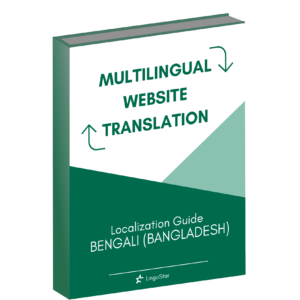The global appeal of K-pop albums
K-pop albums have captured the world’s attention because they represent more than just music—they embody a lifestyle, identity, and global community. Their universal appeal lies in their ability to combine high-quality production, visually stunning performances, and emotionally engaging stories that transcend language barriers.
For example, in the digital era, platforms such as YouTube, Spotify, and TikTok made it possible for international fans to access K-pop albums instantly. The vibrant visuals, synchronized choreography and multilingual lyrics attract listeners who may not understand Korean, yet still feel an emotional connection to the music.
Moreover, the fandom culture surrounding K-pop albums strengthens their global reach. Fans translate lyrics, share Korean-to-English translations and even create subtitles for videos. This helps others understand the meaning behind the songs. This collaboration between fans and artists has transformed K-pop albums into powerful instruments for global connection and cultural exchange.
English and Korean in music albums: The perfect fusion
K-pop albums blend English and Korean beautifully, creating music that feels both international and authentically Korean. The use of English phrases in titles and choruses makes songs easy for fans worldwide to sing along to, while the Korean lyrics preserve the music’s emotional depth and cultural identity.
Artists such as BTS, BLACKPINK, and Twice demonstrate how two languages can coexist harmoniously in music. Through this fusion, K-pop albums promote not only entertainment but also cultural understanding. Many international fans begin exploring Korean-to-English and English-to-Korean translations in order to fully appreciate the lyrics, which sparks curiosity about the Korean language and culture itself.
BLACKPINK, BTS, and Huntri/X: Iconic K-pop albums that broke barriers
K-pop albums by groups such as BLACKPINK, BTS, and the fictional Huntri/X have played a significant part in establishing K-pop as a global phenomenon. These artists have shown that music blending Korean and English can resonate with audiences around the globe. Powerful messages and multilingual lyrics on albums such as BLACKPINK’s Born Pink and BTS’ Map of the Soul: 7 allow fans across the world to connect with them.
The success of these K-pop albums shows that music has no boundaries. By blending languages and cultures, these artists have forged a connection between Korea and the rest of the world. Even the new Huntri/X project from K-Pop Demon Hunters continues this global trend, demonstrating how K-pop’s bilingual style is now expanding into movies and digital media. Through their creativity and global reach, these albums continue to inspire new generations of fans and musicians worldwide.
How English in K-pop albums promotes Korean culture
K-pop albums featuring English lyrics not only make the music more accessible, they also help share Korean culture with the world. By combining familiar English phrases with Korean lyrics, artists can attract a global fanbase while still celebrating their heritage. This blend of languages encourages listeners to learn about Korea, from its traditions to its modern pop culture. Many fans start exploring Korean language, food, and media after falling in love with bilingual songs.
Through their creative use of language, K-pop albums act as cultural ambassadors. They introduce listeners to experience the beauty of Korean identity within a global context. For example, groups like BTS, BLACKPINK and Stray Kids use English to connect with a broader audience, yet it’s the Korean essence of their music that fosters a deep connection with their fans. In this way, K-pop albums promote not just music but also a shared appreciation of culture, language, and creativity around the world.
The future of K-pop albums: Multilingual trends on the rise
K-pop albums are paving the way for a new multilingual era in global music. As their international fanbase grows, artists are experimenting with languages other than English and Korean—such as Japanese, Spanish, and even Tagalog—to connect with fans around the world.
New emerging groups such as NewJeans, ATEEZ and (G)I-DLE are collaborating with international artists and experimenting with multilingual lyrics. As technology and translation tools advance, it becomes easier to understand music across languages. The growing role of English-to-Korean translation and Korean-to-English translation ensures that no message is lost, further strengthening K-pop’s position as a global cultural and creative bridge.
Connecting through language
Just as K-pop albums connects people through music, LingoStar Language Services connects people through language. K-pop’s global success shows the power of multilingual communication in building understanding, bridging culture, and bringing people closer together. At LingoStar, we believe language has the same power to unite and inspire.
LingoStar provides expert Korean translation services for English-to-Korean and Korean-to-English translations, helping clients express their ideas authentically across languages. Wether it’s translating lyrics, localizing content, or adapting marketing materials, our team ensures every message resonates just as strongly as a K-pop chorus.
Do you want to make your message go global? LingoStar can help! We offer a wide range of language services:
- Translation services
- Localization services (websites and subtitling)
- Voice-over translation and subtitling
- Interpretation services
Do you have a project in mind or want to learn more about our services?
Call us at 604-629-8420 or email us at info@lingo-star.com. Ask for a free translation quote—we’re here to help! Are you looking to take your content global? Download our free eBook! How to Expand your Online Business—A Beginner’s Guide to Multilingual Website Translation

This eBook is perfect for anyone looking to grow their business globally and create a strong presence online.
Do you want to stay updated on the latest news from the translation industry? Follow us on social media (Instagram, Facebook, X, YouTube, and LinkedIn), explore our other blog posts, and don’t forget to subscribe to our newsletter to join our community!

















